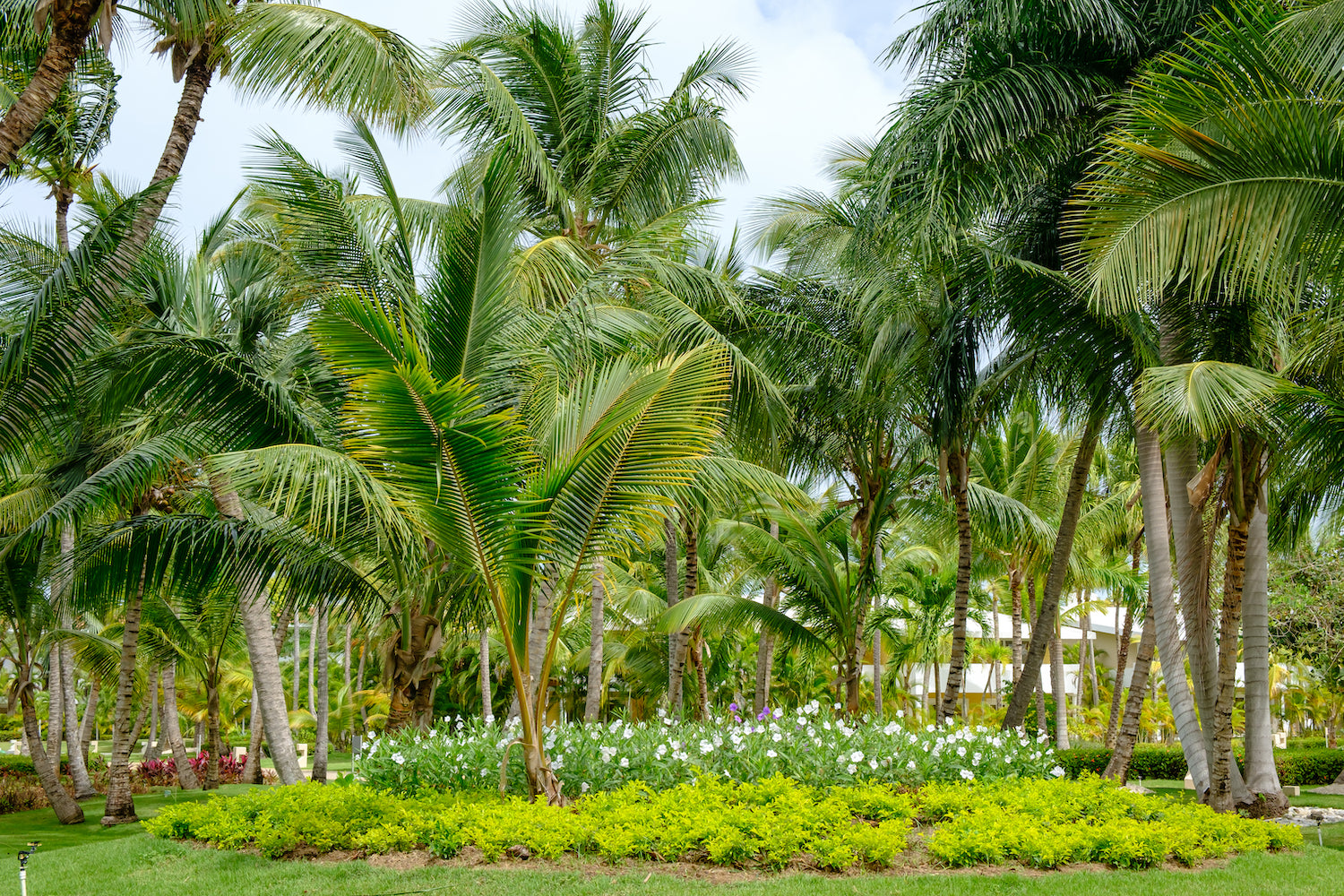What Exactly Is a Palm Tree?
So, when you picture a palm tree, you probably think of a tall, single trunk with a crown of big leaves at the top. And you’re not wrong! But the world of palms is way more diverse than that. They belong to the Arecaceae family, and there are thousands of different species out there. Some are short and shrubby, while others tower hundreds of feet into the sky. Some have multiple stems, and their leaves come in all sorts of shapes and sizes – feathery, fan-like, you name it.
What makes a palm a palm isn’t just its looks, though. They have a unique way of growing. Instead of getting wider like many other trees, they mostly grow taller from a single point at the top. Their trunks don’t have the same kind of bark and woody layers as, say, an oak tree. Instead, they’re made up of tough fibers.
Where Do These Guys Hang Out?
:strip_icc()/bhg-majesty-palm-101876260-0cceea1d54f34df5aa76906525fdf46d.jpg)
You mostly see palm trees in warm climates – think tropical and subtropical regions all over the globe. They love the sunshine and can handle a lot of heat. You’ll find them lining beaches, dotting rainforests, and even in some surprisingly dry areas. Different species have adapted to different environments. For example, some palms are really good at tolerating salty air and sandy soil, which is why you see them so often near the coast. Others prefer the humid conditions of a rainforest.
It’s pretty cool how they’ve spread around the world. While they originated in warmer parts of the planet, humans have also played a role in planting them in new areas for landscaping and agriculture.
More Than Just Looks: What Palms Give Us
Palm trees are more than just scenic additions to a postcard. They’re actually really useful plants! Think about coconuts – they come from coconut palms and provide us with food, water, and even oil. Dates, another sweet treat, grow on date palms. And then there’s palm oil, which is used in tons of products, from food to cosmetics.

But it doesn’t stop there. People use palm leaves for thatching roofs and weaving baskets. The strong trunks can be used for building. Some palms even produce things like rattan for furniture and wax. For many communities in tropical regions, palm trees are essential for their way of life.
The Life Cycle of a Palm
Palm trees have a pretty interesting life cycle. It all starts with a seed. When that seed finds the right conditions – warm soil and enough moisture – it will sprout and send out roots and a shoot. For the first few years, the young palm might not look much like a tree at all. It might just be a cluster of leaves close to the ground.
As it matures, the trunk starts to grow taller, and it develops that characteristic crown of leaves. Palms can live for a really long time, some species for over a hundred years! They reproduce through flowers, which then develop into fruits containing seeds, starting the cycle all over again.
:max_bytes(150000):strip_icc()/grow-indoor-palm-trees-1902902-TIGHTER-3ef3b622f85e42c5b9916132bb9ce607.jpg)
Fun Facts About Palms
Here are a few tidbits to make you sound like a palm expert:
Some of the tallest flowering plants in the world are palm trees.
Conclusion
So, there you have it – a glimpse into the fascinating world of palm trees. They’re so much more than just a pretty backdrop. From their unique biology and diverse species to their crucial role in ecosystems and human economies, palm trees are truly remarkable plants. Next time you see one, take a moment to appreciate its journey and the many stories it could tell.
Unique FAQs About Palm Trees
Do all palm trees produce coconuts?
No, only the coconut palm (Cocos nucifera) produces the coconuts we know and love. There are thousands of other palm species, each with its own type of fruit or seeds, many of which are not edible or don’t resemble coconuts at all.
How can you tell how old a palm tree is?
Unlike many other trees, you can’t typically determine the age of a palm tree by counting rings in its trunk because their trunks don’t grow in that way. Estimating the age can be tricky and often involves knowing when it was planted or observing its growth rate, which varies greatly by species and environmental conditions.
Can palm trees grow in cold climates?
While most palm trees thrive in warm, tropical climates, there are some species that are surprisingly cold-hardy. For example, the European fan palm (Chamaerops humilis) and the needle palm (Rhapidophyllum hystrix) can tolerate freezing temperatures and are grown in some temperate regions.
Are palm trees actually “trees”?
Botanically speaking, palm trees are monocots, which means they are more closely related to grasses and lilies than to typical hardwood trees (dicots) like oaks or maples. They have a different internal structure and don’t produce wood in the same way. So, while we commonly call them “trees,” they are a unique group of plants.
What are some common threats to palm trees?
Palm Tree Plant
:strip_icc()/bhg-majesty-palm-101876260-0cceea1d54f34df5aa76906525fdf46d.jpg?ssl=1)